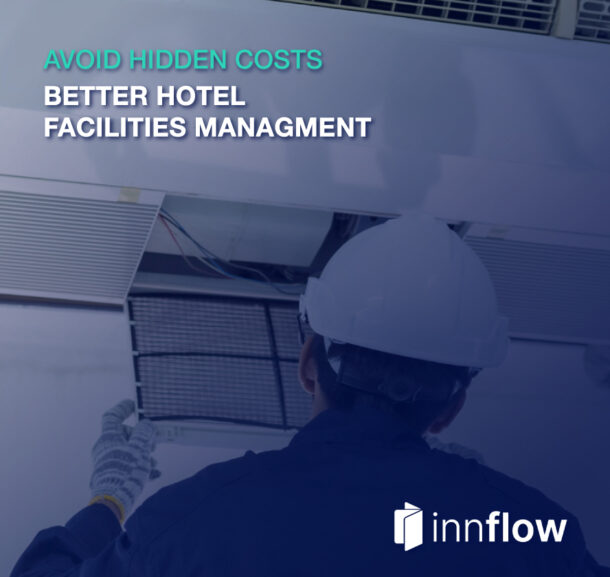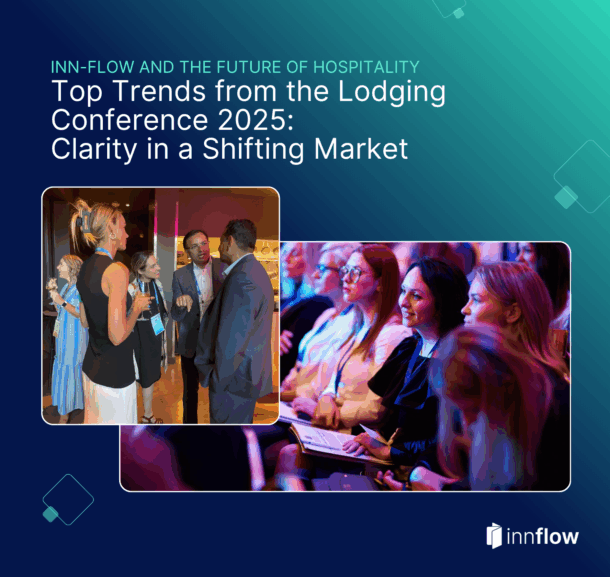Tracking down the AC unit’s maintenance history means digging through outdated binders or disorganized files. Finding time to actually fix the issue? That’s another challenge entirely.
If this sounds all too familiar — juggling multiple urgent work orders without the tools or support to stay on top of it — this blog is for you.
Reactive vs Proactive: The Cycle Hotels Can’t Seem to Escape
Hotels often get caught in a frustrating and costly cycle. Reactive work orders, each with varying levels of urgency, create communication delays. Those delays disrupt the preventative maintenance schedule, which only leads to more emergencies and last-minute fixes.
The result? Dissatisfaction at every level. Guests become irritated by recurring issues. Maintenance teams feel overworked and overwhelmed. Leadership faces compliance concerns, rising costs, and declining morale.
It’s a tough loop to break, but it doesn’t have to be permanent.
5 Biggest Pain Points Dragging Down Hotel Facilities Teams

Facilities challenges are more than just day-to-day frustrations — they have real financial consequences. Wasted time, burned-out staff, and low morale can ripple from maintenance teams all the way up to leadership.
Here are the top five issues hotel facilities teams face and how they can quietly stall operations.
1. Emergency Overload
When everything is treated like an emergency, nothing gets prioritized. Without a clear hierarchy of urgency, facilities teams are constantly putting out fires instead of preventing them. Creating a system that distinguishes between true emergencies and routine tasks is key to staying ahead.
2. Paper Trails & Sticky Notes
Manual processes like handwritten work orders or scattered notes lead to missed requests, unclear priorities, and zero accountability. Outdated record-keeping makes it hard to track progress and all too easy to lose critical information.
3. Lack of Visibility
Leadership and techs alike need clear visibility into maintenance operations, from open work orders to overall team capacity. Without it, mistakes increase, timelines slip, and performance suffers.
4. Communication Breakdowns
Work orders often get passed around like a game of telephone, with the guest caught in the middle. Without centralized documentation and communication tools, accountability gets lost, and follow-through falls apart.
5. No System for Strategic Planning
Long-term success requires strategy. Without lifecycle data and insights, hotels can’t identify trends or improve over time. A lack of planning leads to recurring issues and inefficient operations, month after month.
These pain points are challenging enough on a single property, but across a multi-property portfolio, the impact multiplies. A broken process that wastes a few thousand dollars at one hotel could mean hundreds of thousands in lost revenue and inefficiency when scaled across 20 to 30 locations.
What This Means for Your Team
Left unchecked, these common pain points can quietly chip away at your facilities management team, from the front lines to leadership. At first, the effects may seem minor. But over time, they compound like a slow-moving but aggressive issue that erodes morale, efficiency, and results.
Take your Director of Maintenance, for example. They’re expected to juggle competing priorities:
- Reduce costs
- Improve response times
- Boost team morale
- Maintain operational excellence
Without the right systems and tools, burnout isn’t just likely — it’s inevitable. Even small process improvements can ease the pressure and help prevent larger breakdowns.
Technicians, on the other hand, are often caught in the chaos of unclear priorities, lost paperwork, and poor communication. They spend valuable time chasing down the right information, redoing work, or guessing what to do next.
Over time, even your best team members can feel frustrated, unrecognized, and unable to work at their full potential.
So… Why Haven’t Things Changed?
With all the well-known challenges facility teams face, it begs the question: Why haven’t more hotels made a change?
The reality is, that change often feels risky. Despite the abundance of tools and systems designed specifically for hotel and property management, many teams stick to outdated processes out of habit, fear of added complexity, or a belief that “what’s worked so far is good enough.”
But in today’s fast-paced environment, “good enough” isn’t sustainable.
These hesitations are understandable, but they come at a cost. Every day you delay modernizing your operations, the problems compound: lost productivity, frustrated staff, missed opportunities, and rising expenses.
Yes, change takes effort, but the payoff is worth it. Smoother workflows, clearer communication, and empowered teams are just on the other side of a smarter system.
The best time to evolve your process was yesterday. The next best time? Right now.
The Shift Is Coming — Are You Ready?
Whether you manage one property or a full portfolio, shifting from a reactive to a proactive facilities strategy isn’t just smart. It’s essential.
This kind of transformation improves team morale, boosts operational efficiency, and leads to noticeable upgrades in guest experience. Think faster repairs. Happier staff. Longer-lasting assets. It’s the kind of change that’s felt at every level, from the boiler room to the boardroom.
Even if it feels like a big leap today, something better is just around the corner.
Inn-Flow is building a purpose-built solution for hotel facilities management, designed by people who know the industry inside and out. It’s streamlined. It’s powerful. And it’s almost here.
Want to be first in line when it launches? Join our early access list and get ready to lead the change in hospitality operations.

